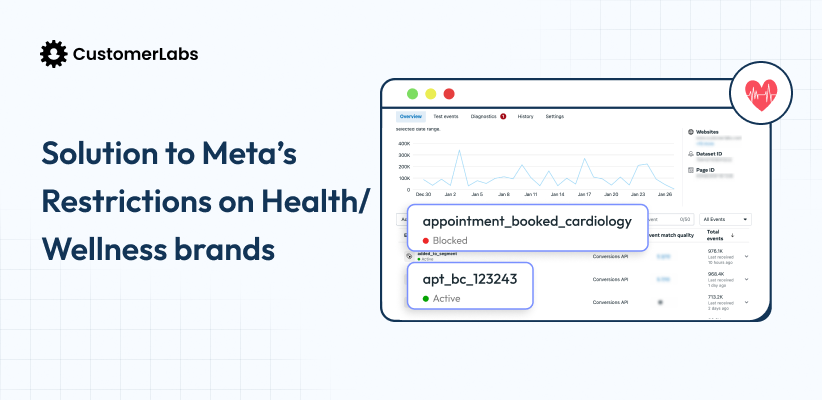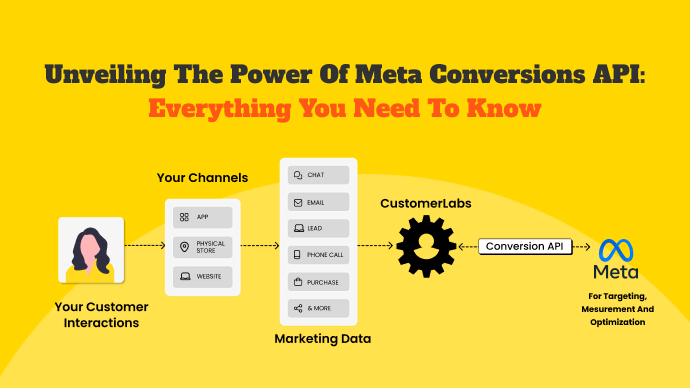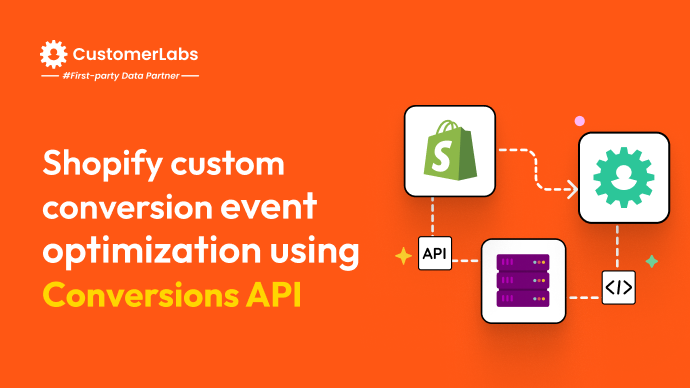Imagine running ads for weeks, spending thousands of dollars, and just when it’s time to retarget high-intent users—Meta blocks your data.
That’s exactly what happened with the health and wellness brands running ads on Meta platforms. Thinking to prioritize the user’s privacy, Meta has started to take action by restricting the event data (prohibited data, i.e., PHI and unhashed event names) sent for ad optimization by the advertisers. These sudden changes have made it harder for performance marketers to target custom audiences, use event-based retargeting and optimize ads for lower-funnel audiences, especially in industries like healthcare, wellness, fitness, etc.
Hence, the strategy that performance marketers think is that I can optimize ads only with the top-funnel audience engagements, yet still unsure of the technicalities of how to send the events to Meta.
What if I said you could do that and could also do whatever you did before the update? Yes, that’s true.
But how? I know that’ll be the next question popping into your mind. To know that you will have to stay with me till the end of this blog. But jump right to conclusions; it is important to understand where and how this started.
This is not an all-sudden move; I saw it coming when Meta released its core setup. Now, let’s connect the dots between the core update and the current scenario of data restriction happening in the health and wellness industry.
Connect the Dots: Core Setup and Data restriction in Health & Wellness by Meta
If you look at the core setup, Meta emphasized the data restrictions that are brought on the sensitive data (PHI & PII) shared by businesses. It also gave an option to the businesses to control and choose which data to be sent to Meta.
In Meta’s exact words,
“Core setup is a set of data restrictions that can be applied to a Meta Business Tool by you or by Meta. There is an option in Meta Events Manager that you can use to turn on data restrictions for the Meta Business Tool that you are using.”
Basically, two types of data were restricted by Meta.
- One, Custom parameters—the parameters that are not included in the user-defined fields in Meta’s standard list.
- Two, anything in a URL after the domain—which means the query strings and product names are also restricted.
By connecting the dots, now you can understand from where the spark actually started, and now we see the Meta’s new restrictions burning the health and wellness industry. You might think its just the health and wellness industry, but you need to understand that Meta has just started, and.
With that being said, let’s understand how the fire is killing your ROAS from health and wellness ads—I mean, why—and how Meta’s new restrictions are impacting your health advertising performance and returns.

Why Meta’s New Restrictions is Killing Ads and ROAS?
I’m gonna make this easy and simple to understand, so let’s get into a before and after depiction with regards to health and wellness ad campaigns.
Before Update:
- Can optimize for standard lower funnel event: You could optimize health ads for events like purchases, appointments scheduled, or lead submission. Eg: A dental clinic running Meta ads could optimize directly for “Appointment Scheduled” events. And Meta’s algorithm would find users most likely to book an appointment, improving ad efficiency.
- Measure the Campaign Performance: You could monitor and measure the conversion data directly within Meta Ads Manager, like how many numbers of products sold or appointments booked from a specific campaign. For instance, if a brand selling organic skincare products ran an ad for a specific vitamin C serum, they could track how many purchases happened from that ad.
- Ad optimization for high-intent signals: You could optimize Meta ads for high-intent signals such as purchase, add to cart, etc. This ensured that ads were shown to users who were ready to convert, increasing efficiency and return on ad spend (ROAS).
After Update:
- Meta restricts lower funnel events: You cannot optimize health ads for lower funnel events. Meta restricts the sharing of PHI (Protected Health Information) of the users to comply with the privacy laws. Even if a user books an appointment, Meta blocks the event data, making it impossible to optimize for users who are likely to convert.
- Cannot Measure the Campaign Performance: You can no longer attribute the conversions from the campaigns inside Meta’s reporting. You can still see the clicks from the Meta ads, but you won’t know how many people actually booked an appointment or made a purchase from the ad. For example, a nutrition brand running a Meta ad for personalized diet plans can’t track how many users completed a purchase from the ad’s landing page.
- Health Ad optimization for low-intent signals: you cannot optimize with high intent signals because they are restricted by Meta for when you run ads for health products; you are left to optimize for low-intent signals (top funnel events), which could lead to higher ad spend and lower ROI.
For what I have said, it seems like the ROAS is definitely dying. Stop freaking out. Up next, I’ll tell you how you can save your ROAS from dying from Meta’s restrictions on health and wellness industry.

How to Overcome Meta’s Health and Wellness Ads Restrictions?
Remove Meta Pixel from the Website:
When the Meta Pixel is removed from the website, Meta won’t be able to track the conversion data or any data from the browser side, such as the url’s or the conversion action taken by the user on the landing page/website. Shift to server-side tracking to control what data is sent to Meta.
Scrub URLs & Query Parameters to Keep Optimization Intact:
Remove the sensitive data from the url and just replace sensitive details with neutral identifiers before sharing data with Meta. Since URLs often contain identifiable health details that Meta may flag as PHI, restricting your ad account’s reach and performance. This way, you can retain conversion signals for health and wealth brands while staying HIPPA compliant.
Use Server-Side Tracking with Conversions API:
Implement server-side with Conversions API (CAPI) to send only relevant data (e.g., event triggers) while stripping away PHI. With server-side CAPI, you can store the data on your own server, preventing the data from getting revealed to Meta unintentionally.
Neutralize Event Names Without Losing Optimization Signals:
Meta does not want to see the full picture. Mask sensitive information and use neutral event names by keeping the optimization signals intact. This way, you will know for which event you have optimized the ads without revealing it to not meta. However, Meta can still optimize based on event triggers and 1P data signals for health and wellness brands without knowing the context.
Avoid Sharing PHI or Direct PII to Prevent Account Issues:
Never share PHI (descriptive values like product name or disease name) or raw PII like patient names, health conditions, or medical history. You can still use PII information, but you need to collect it with explicit consent and hash the data according to Meta’s regulations.
Implement Data Segmentation to Keep Retargeting Effective:
Use first-party data collected from email sign-ups, website visits, and on-platform interactions to create custom audiences. And retarget users by segmenting users based on anonymous engagement signals rather than PHI.
Proactively Monitor & Audit Data to Avoid Performance Drops:
With Meta’s increased scrutiny, unintentional data leaks (e.g., sending PHI in event parameters) can hurt ad performance or even get your account flagged. Health and wellness brands can conduct regular audits to ensure no sensitive data is leaking to block data before being sent to Meta.
Get Explicit Consent to Future-Proof Ad Performance:
Build a consent-driven, privacy-first approach by building first-party data strategy. Implement explicit consent banners and give options to user to opt otherwise. Store and manage user consent preferences dynamically to ensure compliance.
I know. Too much to work on before setting up campaigns for health and wellness brands. What if there is a solution, where you don’t need technical support or manual tasks to do all the above and much more than that?
That will be great. Nope. It will not be just great, but it will be like a boon sent from heaven.
Here’s the boon…

Easy Way to Fix Meta’s New Restrictions: Opt for 1PD Ops
What’s that code word, 1PD Ops? It is a first-party data (1PD) Ops platform where you can collect, unify and activate customer data. With 1PD ops like CustomerLabs, it is easy to integrate with multiple ad platforms and analytical tools without the need of any technical expert.
Scrub URLs and Events Automatically
The automated scrubbing process of First-Party Data Ops ensures that sensitive URLs or query parameters are cleaned before they reach Meta, making it apt for health and wellness brands. For instance, the URL /book-therapy-session?type=cardiology would be anonymized to something like /event123, keeping the tracking signal intact while avoiding privacy concerns.
Enable Server-Side Tagging with a Toggle on:
You can easily implement server-side tracking just by clicking on a toggle, without any support from the developers team. And server-side tracking ensures sensitive data is filtered out before being sent to Meta.
Replace sensitive events with Dynamic names:
With First-Party Data Ops, you can automatically rename sensitive events to dynamic, generic labels (e.g., “event_01” instead of “book_fertility_consultation”), ensuring that Meta still has the data it needs for campaign optimization.
Collect first-party data with User Consent:
You can integrate real-time consent tracking for every user interaction, ensuring full compliance with privacy regulations like HIPAA, GDPR, and CCPA.
Build Custom Attribution Reporting with Looker Studio:
1PD Ops provides Looker Studio integration, allowing you the ability to track both top-funnel (awareness) and bottom-funnel (conversion) metrics and providing a full picture of how the campaigns are performing.
Track Audience Behavior with Custom Event Tracking:
With robust tools like CustomerLabs, you can track micro conversions like page scroll, page visits and high-intent conversion actions such as add to cart, product purchase in a granular view.
Real-time compliance monitoring:
1PD Ops provides real-time compliance monitoring that automatically detects and blocks restricted terms or sensitive data from being shared with Meta. This proactive monitoring ensures that your campaigns are always compliant, preventing any unforeseen disruptions.
With First-Party Data Ops, you can future-proof your marketing efforts by being compliant with privacy laws like HIPPA, GDPR and many more that are yet to come in the near future. I don’t know whether you believe in superstitions, but this is your sign to opt for the 1PD Ops strategy. Go with robust 1PD Ops platforms, CustomerLabs and future-proof your campaigns.
The First-Party Data Imperative
First party data is crucial and helps your businesses offer more trust to your customers. In addition to that, 1PD has offered 2.9X Higher revenue uplift achieved by brands deploying all four sophisticated activations.

This is an example of how you can collect your user data
There are two data samples you must notice; 1. The event data collected from your website or any other source, and 2. The event data requested by the destination – in this case Meta.
Event collected data
{
"event_from": "website",
"p1": "FS_ALL",
"p2": {
"additional_info": {
"browser": "Chrome 132",
"continent": "Asia",
"country": "XXXXXX",
"ip_address": "###.xx.xx.xxx",
"latitude": "xx.xxxxxx",
"longitude": "xx.xxxxxx",
"mobile_desktop": "Other",
"platform": "Windows 10",
"postal_code": "111111",
"screen_size": "1280 x 720",
"time_zone": "xxxx/xxxx",
"user_agent": "Mozilla/5.0 (Windows NT 10.0; Win64; x64) AppleWebKit/537.36 (KHTML, like Gecko) Chrome/132.0.0.0 Safari/537.36"
},
"browser": "Chrome xxx",
"browser_language": "en-US",
"city": "xxxxxxxxx",
"continent": "xxxx",
"country": "xxxxxxxxxx",
"cuid": "undefined",
"enabled_integrations": [
"google_adwords_####",
"google_analytics_gtag_####",
"google_sheets_####",
"bigquery_####",
"facebook_####"
],
"env": "app",
"event": "FS_ALL",
"event_datetime": "2025-01-25T10:57:02Z",
"event_from": "website",
"event_name": "FS_ALL",
"external_ids": {
"customerlabs_user_id": "cl###################-###-####-bdcf-###########",
"default": "[email protected]",
"google_analytics__client_id": "##########.##########",
"google_analytics__session_id": "##########",
"identify_by_email": "[email protected]",
"identify_by_phone": "11101111111"
},
"gid": "clxxxxxxxxxxxx-xxxx-xxxx-xxxx-xxxxxxxxxx",
"group": {},
"group_external_ids": "{}",
"group_name": "",
"group_segments": {},
"identified": "false",
"ip": "xxx.xx.xx.xxx",
"isp": "nil",
"latitude": "xx.xxxx",
"link": "https://yourdomain.com/",
"longitude": "xx.xxxx",
"mid": "clxxxxxxxxxxxx-xxxx-xxxx-xxxx-xxxxxxxxxx",
"mobile_desktop": "Other",
"other_params": {
"user-agent": "Mozilla/5.0 (Windows NT 10.0; Win64; x64) AppleWebKit/537.36 (KHTML, like Gecko) Chrome/132.0.0.0 Safari/537.36"
},
"platform": "Windows 10",
"postal_code": "111111111",
"products": [],
"screen_size": "1280 x 720",
"segments": {},
"sid": "CL-########-####-#####-####",
"src": "www.google.com",
"src_typ": "Organic",
"state": "xxxxxxxxxx",
"time_zone": "xxxxx/xxxxxxx",
"title": "Mental Health Provider",
"traits": {
"email": "[email protected]",
"first_name": "name",
"last_name": " name",
"phone": "(111) 011-1111"
},
"type": "pageview",
"uid": "cl###################################",
"user_additional_info": "{}",
"utm": {
"utm_cl_referrer_path": "www.google.com/",
"utm_cl_sub_domain": "www.google.com",
"utm_medium": "Organic Search",
"utm_source": "www.google.com"
},
"v_typ": "New",
"version": "null",
"webhook_doc_id": ""
},
"p3": [],
"p4": false,
"p5": "default"
}The below is an example of how Facebook requests data, and you must send it:
Destination requested data
{
"action_source": "website",
"custom_data": {},
"event_id": "clxxxxxxxxxxxx-xxxx-xxxx-xxxx-xxxxxxxxxx",
"event_name": "FS_ALL",
"event_source_url": "https://yourdomain.com/",
"event_time": 1737802682,
"user_data": {
"anon_id": "clxxxxxxxxxxxx-xxxx-xxxx-xxxx-xxxxxxxxxx",
"client_ip_address": "xxx.xx.xx.xxx",
"client_user_agent": "Mozilla/5.0 (Windows NT 10.0; Win64; x64) AppleWebKit/537.36 (KHTML, like Gecko) Chrome/132.0.0.0 Safari/537.36",
"country": [
"eb3102a6cb586765d01fad324523ec0bc67b9efd6a2d9589c135adfedf7922cc"
],
"ct": [
"2a495a6770e82baef293e553a9f5e45575902f50a4011356eceead37492e7507"
],
"em": [
"548577f3141e55e478f02286898e066db90ca261471949f68e4b25231a1537a9"
],
"external_id": [
"e63c0ad6c4ef1f2707d2df69c31e2d622341070ce28a91b75de111b7ae6b9227"
],
"fn": [
"6dce69facae598b79f7aab72a638381e6a79594b33ea60a89d34d02171fbc44a"
],
"ln": [
"2f48b881ea7073f1c6f083b296a360bd4c9cf51edaacba1cd9c34d8ae3d994ec"
],
"ph": [
"43ae9cc8445fe3f7a5f434ec7c8a6835c4e1a95d564c68722eb482b3d5bbe3fa"
],
"st": [
"2a495a6770e82baef293e553a9f5e45575902f50a4011356eceead37492e7507"
],
"zp": [
"b762f726481f40a3331227db78ea41f3009dc5f1dc86fd231e1f59183488fefc"
]
}
}Wrapping Up: Don’t let Meta restrictions stagnate your Ad Performance
Make hay while the sun shines. It’s a wake-up call given by Meta to everyone, not just for health and wellness. Be a smart marketer; be proactive in future-proofing your ads. This is not only to please Meta but also to show your customers that you value their privacy.
Your only way out is to switch to a first-party data approach. Don’t lean on the third party when it comes to your customer data. Switch the lane to CustomerLabs 1PD Ops to future-proof your data strategy and regain control over audience targeting. It enables you to collect, unify, and activate customer data compliantly—without relying on third-party tracking limitations. And you get to control which data to share with ad platforms like Meta. Simultaneously, you can elevate your ROAS and overall campaign performance by being privacy-compliant.
Start now and stay ahead of Meta’s restrictions! Leverage a First-Party Data (1PD) Ops platform to build stronger, privacy-compliant audience targeting. Book Demo now!






